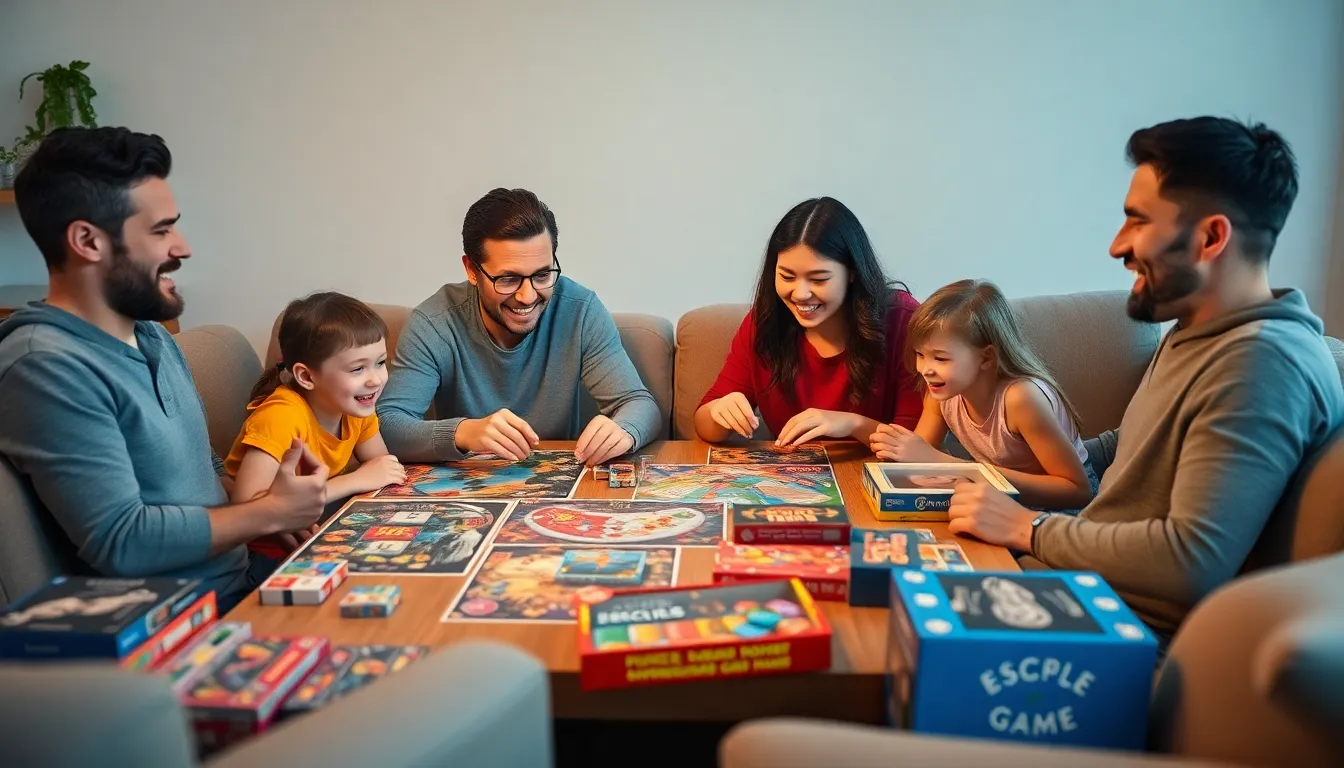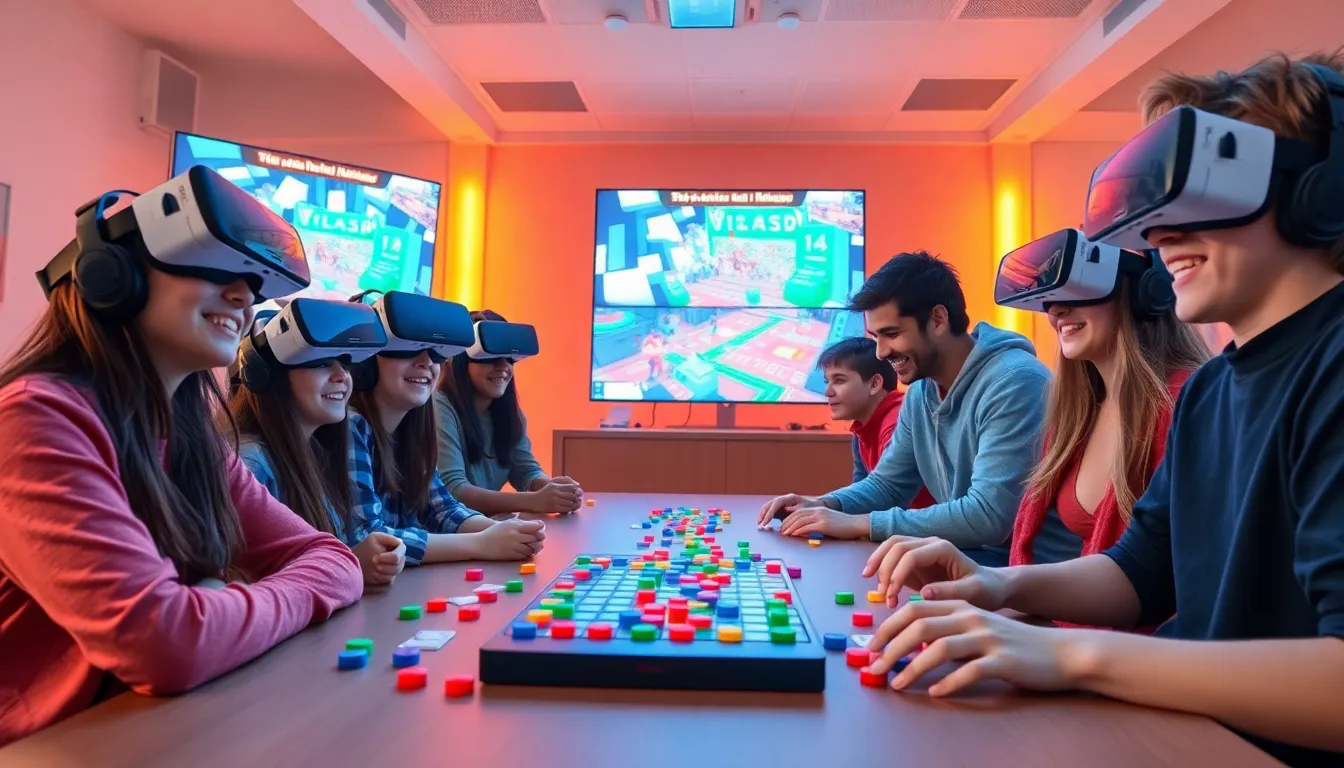Table of Contents
ToggleImagine a world where playtime is not just about fun but also about enhancing critical thinking skills. Enter wooden puzzle games. These charming creations, often crafted with precision and care, invite you to embark on a journey of discovery and challenge. What’s not to love? Whether you’re six or sixty, there’s a wooden puzzle game out there just calling your name. Stick around as we explore the fascinating history, remarkable benefits, and ways to choose the perfect puzzle to satisfy your brain’s cravings. Get ready to piece together joy, one block at a time.
The History of Wooden Puzzle Games

Wooden puzzle games have a rich and colorful history that dates back centuries. The earliest puzzles can be traced to ancient China and Japan, where intricate designs were crafted from wood, often featuring animals or mythological figures. As time went on, these puzzles made their way to Europe, gaining popularity among intellectuals and children alike.
In the 18th and 19th centuries, wooden puzzles became more than just a pastime: they became educational tools. Families in Victorian England embraced these challenges as a way to teach children problem-solving skills while keeping them entertained. Craftsmen dedicated their skills to produce beautifully carved puzzles, each piece symbolizing craftsmanship and creativity. Over the years, puzzles transitioned from grand estates to family living rooms, making them accessible to everyone.
As we ventured into the 20th century, manufacturers began introducing the jigsaw puzzle format, leading to the modern versions of wooden puzzles we see today. With diverse shapes, designs, and themes, wooden puzzles have evolved into a beloved pastime in homes and classrooms around the world.
Benefits of Playing Wooden Puzzles
Playing with wooden puzzles offers a range of benefits that extend beyond simple entertainment. For starters, these puzzles improve cognitive function. As players piece together shapes, they enhance their problem-solving and critical thinking skills. Studies have shown that engaging with puzzles can boost memory as well. This brain workout keeps minds sharp and agile, which is especially beneficial for children and older adults.
Also, wooden puzzles encourage hand-eye coordination. As players manipulate pieces to fit them together, they develop fine motor skills. This is vital for children who are still mastering their dexterity.
Social interaction is another noteworthy advantage. Many wooden puzzle games are designed for groups, which can turn puzzling into a fun social event. Whether at family game night or a gathering with friends, working together to complete a puzzle fosters teamwork and communication. Besides, the tactile nature of wooden pieces offers a break from digital screens, promoting mindfulness and reducing stress.
In essence, wooden puzzles not only entertain but also educate. They serve as perfect tools for mental, physical, and social development.
Types of Wooden Puzzle Games
The world of wooden puzzle games is diverse, featuring an extensive range of types to suit every taste. Here is a look at some popular categories:
Jigsaw Puzzles
These classic puzzles involve interlocking pieces that form a picture. They vary in complexity, from simple images suited for young children to intricate designs that challenge even the most seasoned puzzlers.
3D Puzzles
3D wooden puzzles take the jigsaw concept to new heights, literally. Once assembled, they create three-dimensional structures, such as famous landmarks or animals. This type of puzzle adds an extra layer of creativity and accomplishment.
Logic Puzzles
These puzzles often come in the form of challenge boards where players must arrange pieces to achieve a specific goal. They’re excellent for exercising logical reasoning and critical thinking, making them suitable for all ages.
Educational Puzzles
Designed primarily for children, these often feature letters, numbers, or shapes. They aim to make learning fun by combining play and education. Families can introduce their little ones to fundamental concepts through engaging activities.
Brain Teasers
For those who crave challenges, brain teaser puzzles provide the perfect workout. These can involve a single piece that must be manipulated in various ways to unlock a solution. They test patience and critical thinking, perfect for puzzlers who thrive on challenges.
How to Choose the Right Wooden Puzzle Game
Selecting the perfect wooden puzzle game can feel daunting, but it doesn’t have to be. Here are some tips to guide your decision:
- Consider the Age Group: Ensure the puzzle matches the skill level of the intended player(s). For younger children, look for larger pieces and simpler designs. Older children and adults can handle complex puzzles that challenge their skills.
- Look at Interests: Choose a theme or design that resonates with the individual. This could be animals, landscapes, or abstract art. Personal connections make puzzles more engaging and enjoyable.
- Assess Complexity: Take into account the number of pieces and the difficulty level. Beginners may prefer puzzles with fewer pieces, while seasoned puzzlers might seek out those with 1,000 pieces or more.
- Quality Materials: Ensure that the puzzle is made from high-quality wood. This not only enhances durability but also makes for a more pleasant tactile experience. Quality puzzles are often better finished, with smooth edges that avoid splinters.
- Set a Budget: Puzzles come with various price tags. Decide beforehand how much you’re willing to spend. Keep in mind: intricate designs and higher quality materials typically come at a premium.
Tips for Enjoying Wooden Puzzle Games
Once you’ve chosen a wooden puzzle game, it’s time to jump into the fun. Here are several tips to enhance your puzzling experience:
- Create a Comfortable Space: Find a quiet, well-lit area to work on your puzzle. Comfort is crucial. A dedicated table or space helps prevent pieces from getting lost and makes the process enjoyable.
- Sort the Pieces: Before diving in, sort pieces by color, edge, or shape. This can simplify the process and help you visualize the overall picture.
- Engage Others: Invite friends or family to join in the fun. Collaborating can transform puzzling from a solitary activity into a memorable group try.
- Take Breaks: If you find yourself getting frustrated, take a short break. Sometimes stepping away helps clear your mind and provides fresh perspectives when you return.
- Celebrate Completion: Once you finish the puzzle, take time to enjoy your accomplishment. Consider framing it or displaying it as a beautiful piece of art that reflects your hard work.






